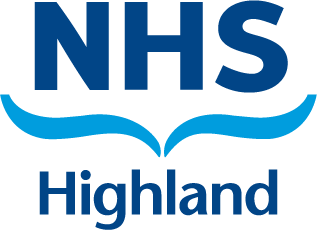Treatment of bacterial meningitis following admission to secondary care (Antimicrobial)

Notes:
- Rationalise treatment on making a diagnosis.
- If recent foreign travel, contact infection specialist as vancomycin may be indicated (aim for trough of 15 to 20mg/L)
- Penicillin-resistant are pneumococci uncommon in Highlands.
- For patients with severe renal impairment, give the first dose then seek advice.
- Doses may need to be adjusted in renal impairment.
- Always check BNF for interactions.
- Seek advice if patient pregnant.
- In addition to lumbar puncture, take blood culture ideally before antibiotic, bacterial throat swab for culture, green top viral throat swab for viral PCR and EDTA blood for meningococcal, pneumococcal and Haemophilus influenzae PCR.
- Note that patients should not have neuroimaging before their lumbar puncture unless there are clinical features suggestive of significantly raised intracranial pressure (see below):
o Focal neurological signs
o Presence of papilloedema
o Continuous or uncontrolled seizures
o GCS ≤12.
Duration of therapy depends on pathogen isolated.
- Neisseria menigitidis: adult 5 days, child 7 days - duration depends on recovery.
- Haemophilus influenzae: 10 days.
- Streptococcus pneumoniae: 10 to 14 days depending on recovery.
- Listeria (confirmed cases): 21 days.
- No organism isolated but clinical condition consistent with bacterial meningitis: 10 days if clinically recovered.
In patients who are clinically well, consider referral to Out-patient Parenteral Antibiotic Therapy (OPAT) Service to complete course of therapy.
* Avoid simultaneous administration of ceftriaxone and calcium containing intravenous fluids (including parenteral nutrition). Infusions can be given sequentially or, in children, ceftriaxone can be replaced with cefotaxime in doses listed in the BNF for Children.
For glossary of terms see Glossary.
Drug details
'Blind’ treatment of bacterial meningitis following admission to secondary care.
Adults under 60 years of age and listeria not suspected.
IV *ceftriaxone 2g twice daily
With (or just before) the first dose of antibiotics or up to 12 hours after (in all cases of suspected bacterial meningitis and children >3 months)
IV dexamethasone
Adults 10mg every 6 hours
Children 0·15mg/kg every 6 hours
Continue for 4 days if Strep. pneumonia is confirmed or probable pathogen. Stop if another cause of meningitis is confirmed or thought likely. For children 6 weeks to 3 months old - steroids are not of proven benefit.
Adults under 60 years of age with penicillin allergy and listeria not suspected.
Clear history of anaphylaxis to penicillins or cephalosporins
IV chloramphenicol 25mg/kg every 6 hours
Click on link for national dosing and monitoring advice for chloramphenicol.
Daily doses above 4g per day regularly cause bone marrow suppression. Monitor blood count daily and consider reducing the dose as patient's condition improves.
In patients weighing >80kg give a maximum of 2g per individual dose.
Review at 48 hours.
If patient is pregnant, discuss therapy with Microbiology.
Adults 60 years or older OR immunocompromised (including alcohol dependency, pregnancy, liver disease and diabetes)
IV *ceftriaxone 2g every 12 hours
PLUS IV amoxicillin 2g every 4 hours
Adults 60 years or older OR immunocompromised (including alcohol dependency, pregnancy, liver disease and diabetes) with penicillin allergy.
Clear history of anaphylaxis to penicillins or cephalosporins
IV chloramphenicol 25mg/kg every 6 hours
PLUS IV co-trimoxazole 30mg/kg every 6 hours
Click on link for national dosing and monitoring advice for chloramphenicol.
See chloramphenicol monitoring information above.
Child up to 3 months, cover for Listeria
IV cefotaxime 50mg/kg per dose - see BNFC for dosing interval dependant on age
PLUS IV amoxicillin 50mg/kg every 4 to 6 hours – see BNFC for dosing
ADD IV Gentamicin if under 6 weeks – see NHS Highland paediatric gentamicin guidance on the intranet
See also CHILDREN - Empirical antibiotic therapy under TAM for bacterial meningitis.
Child over 3 months
IV cefotaxime 50mg/kg every 6 hours, maximum 12g daily
After 48 hours and unlikely to require HDU/ICU care then consider switching to IV *ceftriaxone 80mg/kg once daily
If viral encephalitis suspected (eg HSV and VZV) suspected (reduce dose in renal impairment)
ADDIV aciclovir 10mg/kg every 8 hours
If VZV confirmed, consider increasing dose to 15mg/kg every 8 hours
Children 3 months to 12 years: 500mg/m2every 8 hours
Note: if obese, use ideal bodyweight to calculate dose of aciclovir.
Repeat LP after 14 days of treatment. If positive continue aciclovir until weekly PCR is negative.
If immunocompromised, repeat LP after 21 days of treatment. If positive continue aciclovir until weekly PCR is negative.
Viral meningitis
Usually self limiting and does not require treatment with aciclovir or antibiotics.
Lyme disease affecting the central nervous system.
See Lyme disease
If lumbar puncture is being performed, please note that CSF samples MUST be accompanied by serum taken on the same day.
Meningococcal disease - confirmed cases
Adult: IV or IM benzylpenicillin 2·4g every 4 hours
Child: IV or IM benzylpenicillin 50mg/kg every 4 hours
Adult: 5 days
Child: 7 days
Unconfirmed but clinically suspected cases
Adult: IV *ceftriaxone 2g twice daily for 10 days
Child: IV*ceftriaxone as per BNFC once daily
Adult: 10 days
Child over 3 months: 10 days
Child up to 3 months: at least 14 days
Prevention of secondary case of meningitis
Seek immediate advice from Public Health/ Health Protection Team.
Patient information leaflets on Information about Meningococcal disease and Ciprofloxacin are available on the intranet.
Patients treated solely with benzylpenicillin or cefotaxime require a single dose of oral ciprofloxacin to eradicate nasal carriage.
